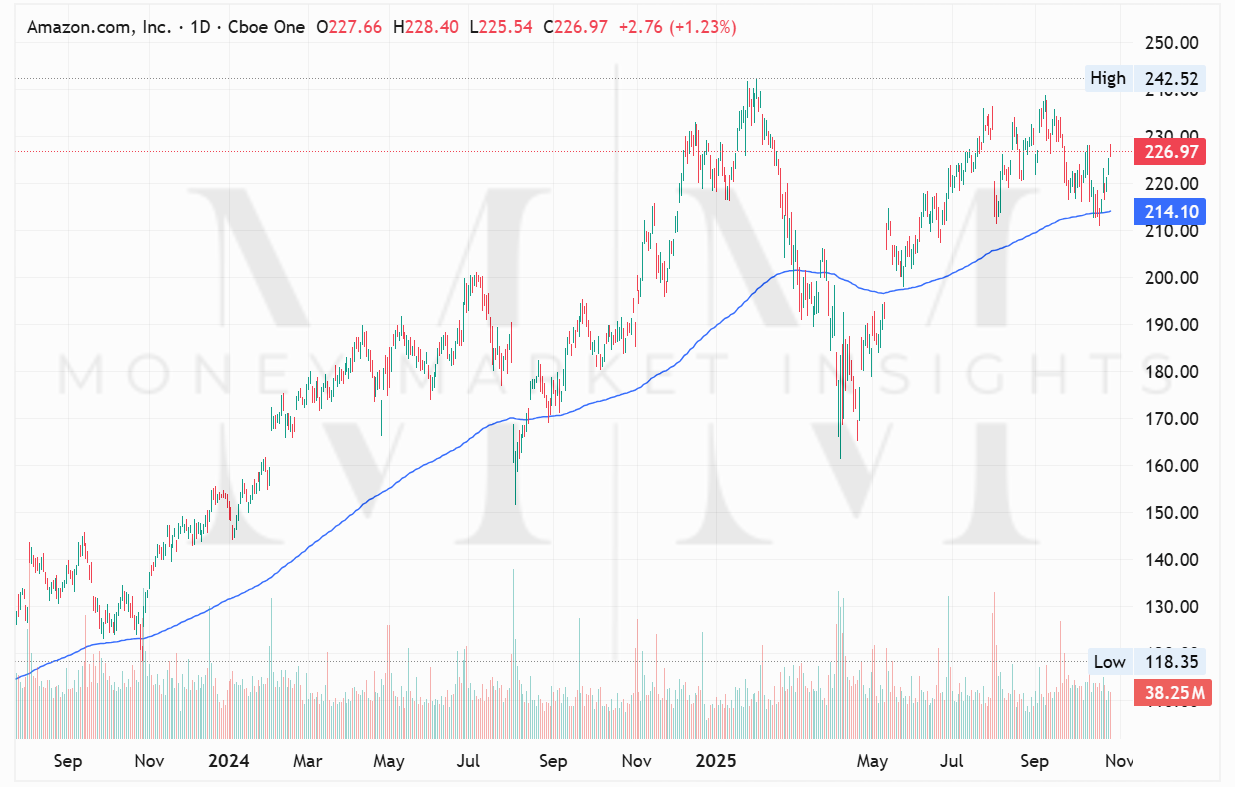Amazon’s 30,000-Job Cut: What It Really Means for the Business and Investors
Amazon is executing its largest corporate layoff ever, driven by AI, cost pressure and over-hiring. Here’s how to interpret the move and what investors should be watching.
Amazon1 has quietly escalated its workforce pruning: internal sources indicate the e-commerce and cloud giant plans to cut up to 30,000 corporate jobs, or about 10% of its ~350,000 corporate employees. This isn’t simply a cost-cutting exercise it’s a signal of what Amazon views as the next phase of its business: automation, efficiency, and the reallocation of capital. For investors, the magnitude, timing and strategic context of this move reveal key shifts in Amazon’s growth model.
What’s Going On Inside Amazon
Scale of Layoff & The Why
Up to 30,000 corporate roles are targeted starting late October 2025, across Human Resources, Devices & Services, AWS and operations.
This marks Amazon’s largest corporate workforce reduction to date (compare with ~27,000 cut in late 2022/23).
The driver: pandemic-era over-hiring, slowed growth post-boom, plus aggressive AI/automation rollout. CEO Andy Jassy has openly said workforce reduction is expected as Amazon scales AI productivity.
Strategic Shifts
Amazon is leaning heavily into AI and robotics, especially in fulfillment, logistics and corporate productivity. A leaked document suggests plans to replace up to 500,000 jobs in coming years via automation.
In 2025, Amazon has earmarked >$100 billion in capital expenditures, a large portion destined for cloud & AI infrastructure.
Amazon also signaled a cultural reset: reducing bureaucracy, cutting layers of management, requiring return-to-office mandates, and instituting the “cost to serve” metric.
What This Means for the Business
Efficiency Over Growth?
The move suggests Amazon is shifting its posture from growth-at-all-costs (common during the pandemic) to operating leverage and profit discipline. The cost savings from the layoff should help margins in the medium term but only if growth holds up.
Risk of Growth Drag
However, large cost cuts can also imply that Amazon sees slower growth ahead, at least in certain segments. Investors should ask: Are these cuts merely trimming fat, or a tacit admission of weaker organic growth?
Capital Reallocation
With fewer people costs and more automation, Amazon can redirect capital to higher-return initiatives: AWS expansions, international markets, generative-AI services, advertising and logistics tech. That may pay off, but execution risk is non-trivial.
What It Means for Investors
Value Section
The layoff offers potential margin upside if Amazon executes and growth doesn’t collapse.
But it also introduces short-term uncertainty: morale issues, severance costs, transitional disruption, possible negative optics.
Metrics to Monitor
Operating margin and cost of goods sold (COGS) trends in upcoming earnings.
AWS and Devices & Services growth rates (as these divisions have more structural risk).
CapEx-to-revenue trends: Are higher AI/cloud investments yielding corresponding revenue?
Employee & productivity metrics: any signs of bottlenecks or service degradation.
Earnings guidance: is Amazon using this layoff to raise long-term margin targets?
Entry & Risk Strategy
If you’re bullish: consider buying on the margin-improvement narrative, but size modestly until you see stabilizing growth.
If you’re cautious: watch for early earnings reactions post-layoff, and monitor growth softness because cost cuts won’t matter if revenue falls faster.
Set stop-loss or hedges: big companies with big cuts can surprise investors in either direction.
Amazon’s 30,000-job reduction is not simply about reducing headcount it’s a strong signal of a strategic pivot: automation, margin focus, and re-investment in AI/cloud. For investors, the question isn’t whether Amazon can cut costs (it can) but whether it can maintain or accelerate growth while doing it. If yes, the margin tailwind could be meaningful. If not, this could be a warning sign of structural slowdown masked as a “cost play.”
*Disclaimer: Not Financial Advice. Investors should conduct thorough research and seek professional advice before making any investment decisions.




